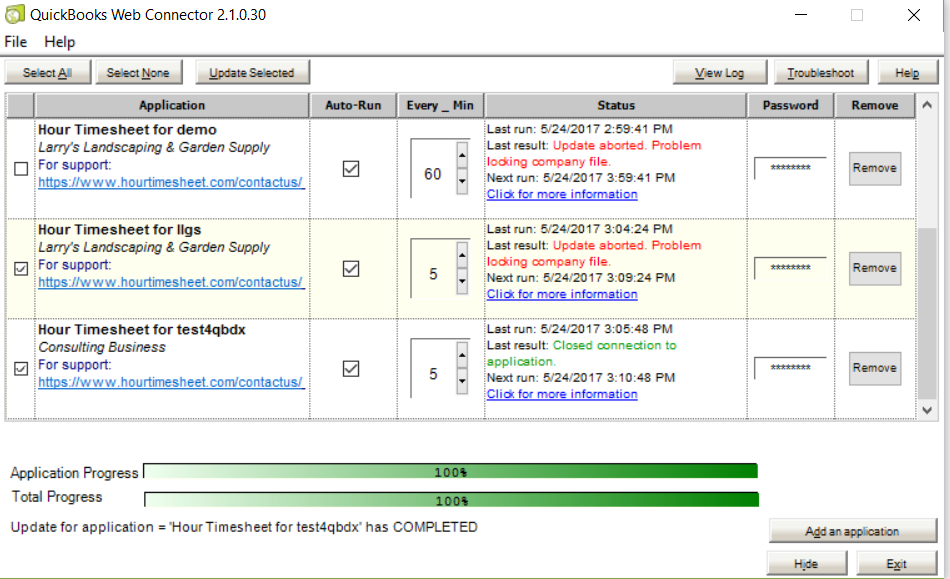
Small business set-asides represent your competitive advantage in federal contracting—until a size standard violation transforms that advantage into a liability costing you the contract, future set-aside eligibility, and your company’s reputation. Understanding size standards isn’t just about calculating employee counts or revenue thresholds when you submit proposals. It’s about maintaining compliance systems proving you qualify for set-aside contracts throughout performance periods while tracking affiliation relationships, monitoring revenue growth, and documenting size determination supporting your small business status. Here’s what small business contractors need to know about maintaining set-aside eligibility—and how to build compliance systems protecting your competitive position.
The Regulatory Framework Governing Small Business Size Standards
Small business size standards derive from the Small Business Act, with implementing regulations at 13 CFR 121 establishing size determination methodologies, affiliation rules, and certification requirements that create enforceable compliance obligations. These aren’t guidelines—they’re regulatory requirements with legal consequences when contractors misrepresent their size status. FAR 52.219-1, the Small Business Program Representations clause included in solicitations, requires contractors to certify their small business status and creates contractor responsibility for representation accuracy under penalty of criminal prosecution for false statements.
The FAR goes further at 48 CFR 19.301-2, establishing that size status is generally determined as of the date of self-certification for the specific solicitation. But here’s what contractors miss: you must continue meeting size standards throughout the life of the contract in many circumstances, particularly for multiple-award contracts and when exercising options. Your size determination isn’t a one-time calculation—it’s an ongoing compliance obligation requiring systematic monitoring and periodic recertification.
13 CFR 121.103 establishes affiliation rules creating the most complex aspect of size determination. Your business isn’t evaluated in isolation—you must account for affiliated companies including parent corporations, subsidiaries, and entities under common control. The affiliation analysis requires understanding ownership structures, management relationships, contractual agreements, and economic dependencies that might create affiliation triggering size standard recalculation including affiliated company revenues or employees.
What Small Business Contractors Must Get Right
Here’s what contractors miss about size standard compliance: your NAICS code selection drives everything, and choosing the wrong code doesn’t just affect your competitive positioning—it affects your legal compliance status. Each NAICS code has specific size standards measured either by number of employees or average annual revenue over a three-year period. A software development contractor (NAICS 541511) with a $30 million employee-based size standard faces completely different compliance requirements than a systems integration contractor (NAICS 541512) with a $47 million revenue-based standard for the same technical work.
Revenue calculation gets complicated because you’re not just adding up invoices. 13 CFR 121.104 requires calculating average annual receipts including all revenue from all sources—government contracts, commercial work, international sales, and any income from investments or other business activities. You must use completed fiscal years, not partial periods, and account for affiliated company receipts when affiliation exists. Small businesses approaching size standard thresholds need systems tracking revenue in real-time with projections identifying when growth will trigger size standard violations.
Affiliation compliance creates the biggest trap for growing small businesses. You might have clean ownership with no parent company or subsidiaries, but affiliation can arise from contractual relationships with your vendors, teaming arrangements with your partners, or even investments from venture capital firms in your cap table. Here’s where compliance goes sideways: contractors form joint ventures to pursue contracts without understanding Joint Venture agreements themselves can create affiliation if structured improperly. That strategic partnership helping you win contracts might be destroying your small business status if the relationship creates affiliation under SBA rules.
Understanding DCAA compliance requirements for small businesses means building systems tracking not just your direct costs and labor hours but also your size determination components including revenue tracking, employee counting methodologies, and affiliation relationship documentation. These systems prove your eligibility when competitors challenge your size status or contracting officers request verification.
Five Essential Steps for Size Standard Compliance
Step 1: Implement Continuous Size Determination Monitoring Systems
Build automated systems tracking your size determination components on a monthly basis rather than calculating size only when preparing proposals. Create dashboards monitoring employee counts (including full-time equivalents for part-time workers as required by regulations), tracking revenue on a rolling three-year average basis, and projecting when growth trends will approach size standard thresholds. The goal is advance warning—you need to know six months before you’ll exceed size standards, not discover the problem after submitting a proposal certifying small business status you no longer hold.
Deploy timekeeping systems that support compliance tracking by accurately counting employees and calculating full-time equivalents required for employee-based size standards. Your timekeeping data should interface with size determination calculations providing real-time employee count accuracy supporting size certifications.
Step 2: Establish Affiliation Analysis Documentation Procedures
Create comprehensive documentation supporting your affiliation analysis including organizational charts, ownership structures, contractual relationship inventories, and management control assessments. When you certify small business status, you’re implicitly certifying you’ve performed adequate affiliation analysis and determined no affiliation exists requiring size standard recalculation. That certification requires supporting documentation demonstrating due diligence.
Develop systematic procedures reviewing all significant business relationships for potential affiliation implications including subcontractor agreements, teaming arrangements, joint ventures, investor relationships, and shared facility or resource arrangements. Maintain legal review of agreements before execution confirming relationships don’t create unintended affiliation violating size standards. DCAA compliance explained emphasizes documentation proving compliance rather than reconstructing justification after challenges arise.
Step 3: Create NAICS Code Selection and Validation Systems
Implement formal procedures for selecting appropriate NAICS codes for each opportunity with documented analysis supporting code selection. The NAICS code selection affects size standard thresholds, so incorrect code selection can inadvertently create size standard violations even when your business qualifies under the correct code. Maintain records showing how you determined the NAICS code based on the principal purpose of the solicitation and the predominant work you’ll perform.
Build systems ensuring consistency between NAICS codes used for size certifications and codes reflected in your accounting systems, capability statements, and marketing materials. Inconsistency creates questions about certification accuracy even when your selected code is technically correct. Document the rationale for any NAICS code changes between related procurements demonstrating legitimate business justifications rather than gaming size standards.
Step 4: Deploy Size Recertification Tracking and Management Systems
Create automated tracking systems monitoring recertification obligations for long-term contracts, indefinite delivery/indefinite quantity contracts, and multiple award vehicles. Many contracts require contractors to recertify size status upon option exercise, task order award, or at specified intervals. Missing recertification deadlines or failing to update size status when your business exceeds size standards creates compliance violations with serious consequences.
Implement calendar-based alert systems notifying appropriate personnel of upcoming recertification obligations with sufficient lead time to perform current size determination calculations, affiliation analysis, and management review before certification submission. Maintain comprehensive records documenting each recertification including the calculations performed, affiliation analysis conducted, and management approval supporting certification accuracy.
Step 5: Establish Size Protest Response Preparedness Procedures
Develop comprehensive size protest response procedures including pre-positioned documentation, rapid response teams, and legal counsel engagement protocols. Size protests typically have short response deadlines—you might have only 5 business days to submit a complete response to the SBA Office of Hearings and Appeals including all supporting documentation proving your size eligibility. You cannot build this documentation after protests arrive—you need systems maintaining protest-ready materials throughout the year.
Create quarterly size determination documentation packages including current calculations, affiliation analysis, NAICS code justifications, and supporting financial records organized for rapid submission. Conduct mock size protests annually testing your documentation adequacy and response procedures, identifying gaps before real challenges emerge. This preparation protects your competitive position and demonstrates the professionalism government customers value.
The Investment in Size Standard Compliance
Building robust size standard compliance systems costs between $25,000 and $75,000 for small contractors depending on business complexity, affiliation analysis requirements, and system integration needs. This includes developing monitoring dashboards, creating documentation procedures, training staff on size determination methodologies, and establishing quarterly compliance review processes. Annual maintenance typically runs $8,000 to $15,000 for ongoing monitoring and documentation updates.
Let me show you the value: small businesses maintaining excellent size standard compliance win protests when competitors challenge their status, maintain eligibility for set-aside contracts worth millions annually, and build government customer confidence in their business integrity. Contracting officers prefer working with small businesses demonstrating systematic compliance management—it reduces their administrative burden and protest risk.
Contractors without adequate systems face size determination protests that cost $50,000 to $150,000 to defend even when successful, require diverting management attention during critical proposal and contract performance periods, and create customer relationship damage regardless of final outcomes. Sustained size standard violations can result in suspension or debarment from federal contracting, False Claims Act liability for contracts performed while exceeding size standards, and criminal prosecution for false certifications under 18 USC 1001.
Understanding Small Business Program Jurisdiction
Small business size standards apply uniformly across all federal agencies through SBA regulations at 13 CFR Part 121, but agencies have flexibility in establishing small business contracting goals and implementing set-aside policies. Your size determination analysis is identical whether you’re pursuing Defense, NASA, civilian agency, or state and local government contracts using federal funds. The regulations create national standards eliminating geographic variation—a small business in California faces identical size standards as one in Virginia for the same NAICS code.
Multi-location small businesses must aggregate employees and revenues across all locations when calculating size. You can’t treat your West Coast division separately from your East Coast operations—size determinations require consolidated calculations including all business activities regardless of geographic distribution. This creates particular challenges for growing companies managing expansion while staying within size standards.
Your Path to Set-Aside Success
The small business set-aside landscape rewards contractors who invest in proper compliance systems demonstrating ongoing eligibility rather than treating size determination as a one-time proposal requirement. SBA Office of Hearings and Appeals decisions consistently favor contractors with comprehensive documentation supporting their size calculations over competitors making unsupported allegations.
Small business status represents substantial competitive advantage in federal contracting—agencies have statutory requirements to award percentages of contract dollars to small businesses, creating preferential treatment in source selection when you qualify. Protecting that advantage requires systematic compliance management proving your eligibility throughout your company’s growth trajectory.
For small business contractors managing size standard compliance while growing operations, Hour Timesheet provides tools supporting both compliance monitoring and operational efficiency. Our platform helps you track the employee data and revenue information feeding size determinations while maintaining the DCAA-compliant timekeeping government contracts require.
Your small business status is a competitive asset. Treat it like one by building systems that protect your eligibility while you grow.
Additional Resources
Related Hour Timesheet Articles:
- DCAA Compliance Requirements for Contractors
- DCAA Compliance Explained
- DCAA Timekeeping Requirements
Official Regulatory References:
- 13 CFR 121 – Small Business Size Regulations
- FAR 52.219-1 – Small Business Program Representations
- 48 CFR 19.301-2 – Determining size status
- SBA Size Standards
- SBA Office of Hearings and Appeals



